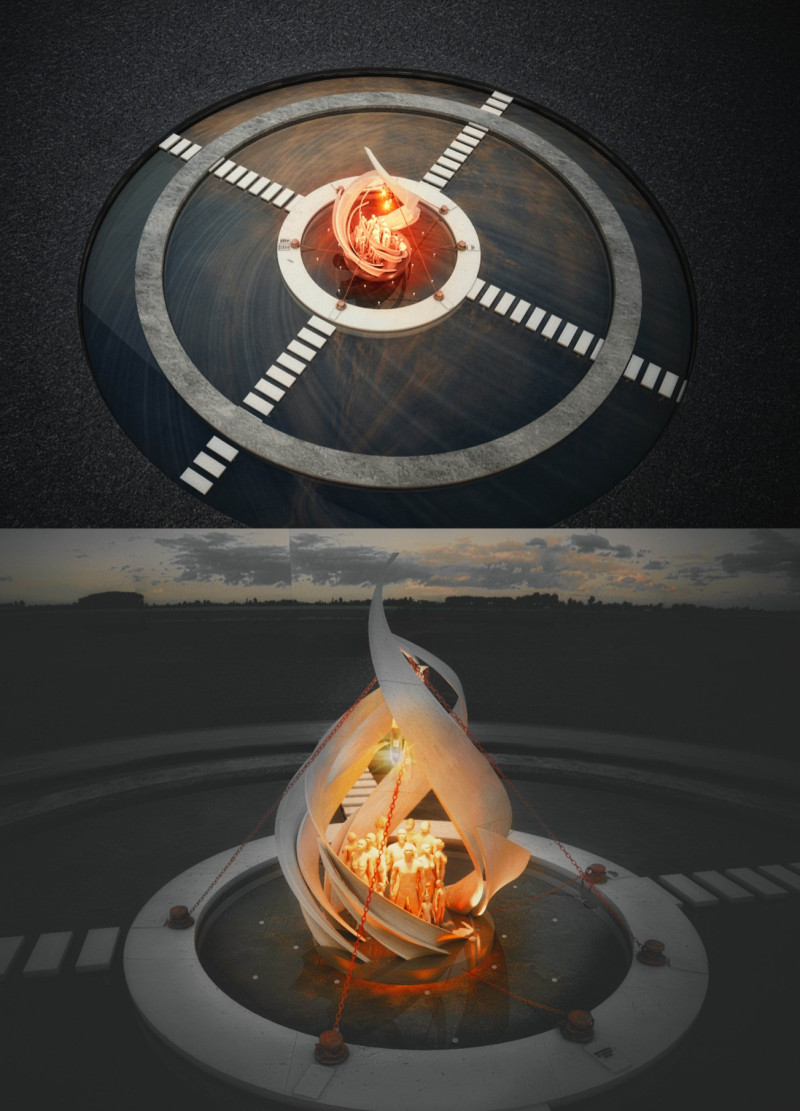5 key facts about this project
The architectural design features a harmonious blend of aesthetics and practicality, prioritizing functionality while still presenting a visually pleasing facade. The project is imbued with a character that speaks to the integration of natural elements as well as modern technological advancements. This duality is expressed through its material palette, which includes reinforced concrete, glass, steel, and sustainably sourced timber. The choice of materials not only serves to enhance the visual quality of the structure but also reflects a commitment to sustainability and longevity.
In terms of spatial layout, the project is designed around a central gathering space that fosters social interaction. This communal hub is flanked by various functional areas, including offices, meeting rooms, and leisure zones, thereby catering to a wide range of activities. The open-plan concept facilitates ease of movement and encourages interactivity among users, showcasing a modern approach to architectural design that values collaboration over isolation.
Light plays a pivotal role in the experience of the space. Large, strategically placed windows allow natural light to flood the interior, creating a warm and inviting atmosphere. This emphasis on natural illumination not only reduces reliance on artificial lighting but also enhances the psychological well-being of occupants, emphasizing a design philosophy that values human experience.
The project’s roof design is another standout feature that deserves mention. It incorporates green roofing principles, providing additional insulation while supporting local biodiversity. This aspect reflects a conscientious approach to environmental stewardship and enhances the building's energy efficiency. Furthermore, the roof features terraced areas that provide outdoor spaces for relaxation and social gatherings, blurring the lines between indoor and outdoor environments.
In terms of unique design approaches, the project employs biophilic design principles, drawing inspiration from the natural world to create spaces that promote well-being. This method is evident in the subtle integration of natural materials and textures throughout the design, which serves to ground the structure within its environment. The architectural choices reflect an understanding of the importance of connection to nature, fostering an atmosphere conducive to creativity and productivity.
Additionally, the project incorporates advanced building technologies aimed at enhancing user experience and operational efficiency. Features such as smart environmental control systems regulate temperature and air quality, ensuring that the internal environment remains comfortable year-round. These technological advancements work alongside the carefully considered spatial configurations to create an environment that is responsive to user needs while minimizing environmental impact.
The architectural plans and sections reveal a commitment to detail and coherence in design, demonstrating the thoughtful consideration that has gone into every aspect of the project. The interplay of spaces is not only functional but also evocative, with each area designed to serve a distinct purpose while contributing to the overall narrative of the building.
In summarizing the significance of this architectural design project, it becomes clear that it serves as a model for contemporary architecture that values both communal living and environmental responsibility. By encouraging users to connect with each other and the natural world, the project transcends its physical structure, becoming a genuine catalyst for community engagement.
For those interested in delving deeper into the intricacies of this architectural project, further exploration of the architectural plans, architectural sections, and architectural designs will provide a more comprehensive understanding of its unique features and innovative approaches. Each of these elements contributes to a richer appreciation of how thoughtful design can facilitate interaction, enhance experience, and promote sustainability in a meaningful way.























